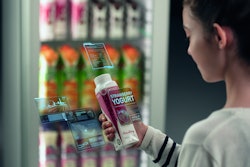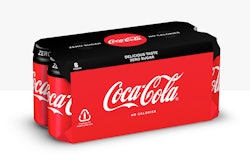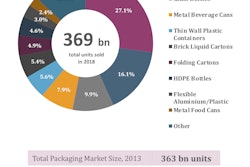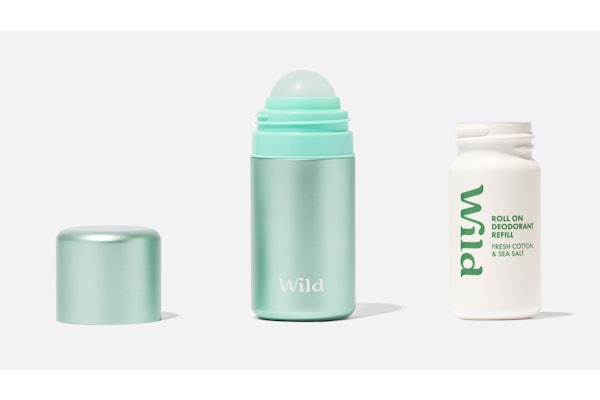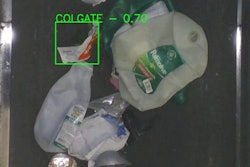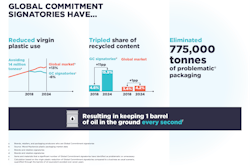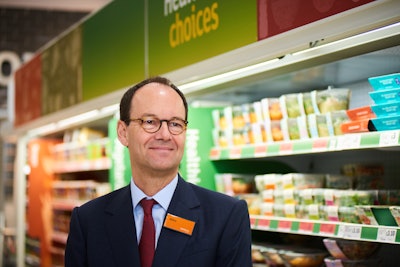
U.K. supermarket chain Sainsbury’s has announced an ambitious new commitment to reduce plastic packaging by 50% by 2025. This new target includes all branded food packaging, Sainsbury’s brand food packaging, and packaging across all of its operations. According to the company, it currently uses almost 120,000 tonnes of plastic packaging per year and believes a transformational leap in thinking is required to move the industry beyond existing efforts at reducing packaging. In 2018, Sainsbury’s says it reduced plastic packaging by 1%.
To meet this goal, Sainsbury’s will launch a program to accelerate change, which will include switching to alternative materials, using lighter-weight plastics, and introducing refillable packaging at scale. Following rigorous analysis of its plastic footprint, the key areas of focus for the biggest impact are plastic milk bottles, packaging for fruit and vegetables, carbonated drinks, water, and fruit juices.
Says Sainsbury’s, some of these alternatives will require customers to change their behavior—for example, plastic milk bottles are currently one of largest sources of plastic packaging. Sainsbury’s is reviewing alternative options, including the introduction of refillable bottles, introducing returnable milk bottles, or offering a reusable jug with milk in a lightweight plastic pouch.
The company notes that it cannot achieve this commitment on its own. To achieve its ambition, it plans to pioneer new ways to collaborate with food manufacturers, packaging suppliers, raw material scientists, and other retailers, alongside the waste and recycling industry. To kickstart this collaboration, Sainsbury’s is co-hosted a summit with the Natural Environment Research Council (NERC), part of UK Research and Innovation (UKRI), in mid-September that brought together branded suppliers, researchers, and government stakeholders to identify potential breakthrough innovation projects.
After the summit, Sainsbury’s will continue to work with suppliers and other partners to develop and implement solutions to the plastics challenge, including through collaborative project bids within the U.K. government’s new £60 million Smart Sustainable Plastic Packaging challenge program.
Sainsbury’s is also looking to open-source ideas, offering an area on its website for customers, colleagues, manufacturers, entrepreneurs, and other interested parties to submit ideas to help reduce plastic packaging.
Says Mike Coupe, Chief Executive of Sainsbury’s, “We have set ourselves a bold ambition because we understand that we urgently need to reduce our impact on the planet and to help drive change across our industry. Reducing plastic and packaging is not easy. Packaging plays a vital role in keeping our food safe and fresh and minimizing food waste. We must therefore find alternatives to plastic that protect the quality of our food while minimizing our impact on the environment. We can’t do this on our own, and we will be asking our suppliers and our customers to work with us to help us make this important change.”
Sainsbury’s says it will work with Greenpeace on this commitment and will report publicly on progress every six months.
Sainsbury’s Existing Plastic Reduction Commitments
Remove:
- Lightweight, loose produce bags will be removed by September 2019 (489 tonnes)
- Plastic trays are being removed from asparagus and sweetcorn (144 tonnes); cream pots (114 tonnes); tomatoes (102 tonnes); carrots (38 tonnes); and herb pots (18 tonnes)
- Plastic has already been removed from cauliflowes, organic bananas, easy-peeler citrus fruit, brassicas, and tomatoes
- Microbeads were removed from its own brand products in 2013
Replace:
- Fresh food black plastic trays will be replaced with recyclable alternatives (6000 tonnes) by the end of 2019
- Polyvinyl chloride and polystyrene trays will be replaced with recyclable alternatives (1213 tonnes)
- Plastic film on fruit and vegetables will be replaced with a recyclable alternative (2518 tonnes) by end 2020
- All its own-brand flushable wipes are plastic free and compliant with industry guidelines, which are recognized across the U.K. and Europe; Sainsbury’s is also working to meet the new Fine to Flush standard in the future while ensuring it does not compromise the quality of the product
- Plastic cutlery was replaced with wooden cutlery in Food to Go, saving 38 tonnes of plastic
Reuse:
- Fresh water stands will be available for customers to refill their own water bottles in 326 supermarket cafes across the country
- Customers are encouraged to bring their own containers to meat and deli counters
Recycle:
- A ‘pre-cycle’ area will be trialed in stores for customers to remove unwanted packaging and leave it for recycling
- Customers will be able to use recycling facilities at 125 additional stores (currently 275)
- Collaboration with others on research to develop new packaging and recycling technologies
- Deposit return schemes are being piloted so customers can return recyclable packaging simply and easily


